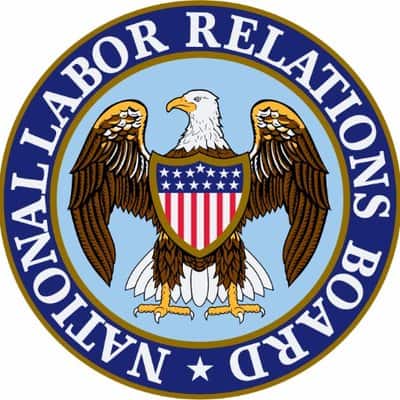Time to Restore Traditional Joint-Employer Standard

 This week the public comment period closes in regards to the National Labor Relations Board’s (NLRB) proposed rule to modify the standard for joint employment. This concept determines when multiple employers are considered one for the purposes of collective bargaining and liable for unfair labor practices under the National Labor Relations Act.
This week the public comment period closes in regards to the National Labor Relations Board’s (NLRB) proposed rule to modify the standard for joint employment. This concept determines when multiple employers are considered one for the purposes of collective bargaining and liable for unfair labor practices under the National Labor Relations Act.
In the comment letter, the Competitive Enterprise Institute (CEI) applauds the NLRB’s rule that prepares to return to the longstanding joint employer precedent. Under the proposed rule, a joint-employer relationship is established when an employer exercises “substantial direct and immediate control over the essential terms and conditions of employment of another employer’s employees in a manner that is not limited or routine.” This is a departure from the Obama-era decision Browning-Ferris, which broadened the definition of a joint employer to include indirect control and unexercised potential control.
The current rulemaking simply seeks a return to the longstanding precedent governing joint-employer relationships. Despite this relatively innocuous action, Democrats in Congress have tried to derail restoring the traditional joint-employer standard every step of the way.
Democrats should praise the NLRB for using the rulemaking process rather than adjudication, which is historically the primary method for the agency to change precedent.
In CEI comments, I explain the benefits of rulemaking over adjudication:
- Rulemaking is a more inclusive process. The entire regulated community has the ability to voice their concerns or support for the proposed policy prior to its adoption. When the NLRB uses its adjudicative powers, many times only the immediate parties involved have the opportunity to present its views to the agency. Allowing everyone to participate in policymaking gives as complete a picture of the issue as possible.
- Rulemaking also provides transparency and predictability. Adjudication can change precedent at a moment’s notice without any warning.
- A purported benefit of adjudication is it avoids political conflict because “slow, case-by-case accretion of policy is less dramatic…and yet also more impregnable to political attack.” This advantage does not apply to the NLRB. Due to the makeup of the Board, policy changes are rapid and swing like a pendulum. As I note in the comment letter, “the Obama NLRB reversed 4,105 years of precedent via adjudication.”
In addition, restoring the direct-control joint-employer standard is crucial in order to avoid negative impact on business operations. Data from the franchising industry consultancy FranData found that “40,000 businesses operating in 75,000 franchise locations are at risk of failure because of the NLRB ruling and its resulting egregiously high labor and operating costs.” In addition, the increased risk of business failures and potential decline in the formation of new franchise businesses could mean that “600,000 jobs may be lost or not created.”
Research from the American Action Forum backs up this data. The new joint employer standard could slow job growth at franchise companies, hitting the hospitality industry especially hard. The private sector would create 1.7 million fewer jobs over the next 10 years if the traditional joint employer standard is not restored. The hospitality industry alone would create 500,000 fewer jobs during the same time period
Another problem associated with the Obama-era NLRB joint-employer standard is that it punishes employers for providing assistance to contractors. For example, the current joint-employer standard is a looming threat to businesses that offer apprenticeships and job training opportunities. As I write in my comment letter:
Under an indirect control standard, a joint employer relationship could be established by something as minor as a franchisor providing employees at franchisees with training or apprenticeship opportunities. Due to the NLRB’s vague joint employer standard, every interaction like this becomes a legal question that must be kicked around by human resource professionals and lawyers prior to implementation. Without change in the joint employer standard, companies may rethink whether it is wise to offer these opportunities to their franchisees’ employees.
For these reasons, and others, the NLRB’s proposed rule is good policy and necessary to address the regulatory uncertainty created by the Browning-Ferris decision. Addressing the joint employer issue via rulemaking is a better, less-politicized process than adjudication. In addition, restoring the direct and immediate control standard will avoid needless costs that stem from the vague and overly broad joint-employer standard.
Read the Competitive Enterprise Institute’s comments to the National Labor Relations Board on its proposed joint-employer rulemaking here.